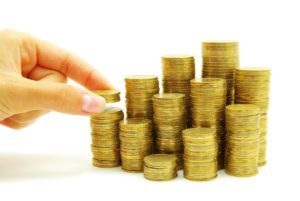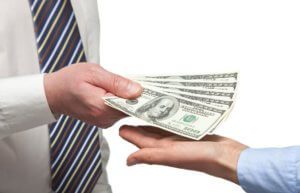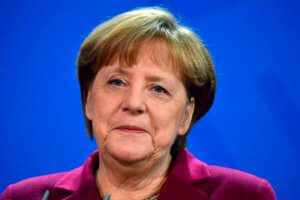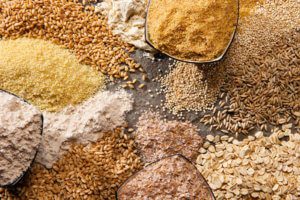
The top 100 largest state-owned companies in Ukraine in 2017 saw net profit rise by 38.5% compared to 2016, to UAH 44.4 billion, while 88.5% of this amount was the profit of Naftogaz, according to data released by the Ministry of Economic Development and Trade. “The main factor of the growth of Naftogaz Ukrainy’s profit in 2017 was the victory in arbitration proceedings against Gazprom, due to which Naftogaz received the largest net profit for 20 years,” the ministry said, noting that in 2017 the net profit of Naftogaz increased to UAH 39.3 billion against UAH 17.8 billion in 2016.
The enterprises of state-regulated industries have become the most profitable in the list of the top 100 companies, First Deputy Minister of Economic Development and Trade Maksym Nefyodov said.
“At the same time, most companies remain extremely inefficient, as before. We have only one way out – to continue the corporate governance reform of those strategic state-owned companies that must remain in state ownership and hold a transparent privatization of other companies under the law adopted this year,” he said.
According to the ministry’s report, the total value of the assets of state-owned companies in 2017 compared to 2016 increased by 5% and amounted to more than UAH 1.509 trillion.

New renewable energy generating facilities with a total installed capacity of 160.1 MW were launched in Ukraine in July-September 2018, which is 2.4 times more than a year ago, the press service of the National Commission for the State Regulation of Energy, Housing and Utilities Services (NCER) has reported. “The share of wind farms and solar power plants is 97% of all facilities launched,” the commission said.
Wind farms with a total capacity of 7MW, solar power plants of 148.8 MW, biogas plants of 3.6 MW and small hydroelectric power plants of 0.7 MW were launched in Q3 2018.
Thus, as of October 1, 2018, Ukraine has wind farms with a total capacity of 522.4 MW, solar power plants – 1.096 GW, biomass plants – 43.8 MW, biogas plants – 44.6 MW, small hydroelectric power plants – 96.4 MW.
The total installed capacity of renewable energy facilities is 1.8 GW (not taking into account annexed Crimea where wind farms of 494.9 MW were launched earlier).
Today, the share of renewable energy of total electricity generation in Ukraine is 1.8%, and the share of the total cost of electricity is 8.3%.

Real wages in Ukraine in August 2018 compared to August 2017 increased by 15.7%, compared to July 2018 it fell by 2.1%, the State Statistics Service has reported.
It said the average nominal wage of full-time employees in August 2018 compared to July 2018 fell by 2.1%, in annual terms it rose by 26.2%, amounting to UAH 8,977, while in July it was UAH 9,170, in June UAH 9,141, in May UAH 8,725, in April some UAH 8,480, in March some UAH 8,382, in February some UAH 7,828, and in January UAH 7,711.
According to statistics, the largest growth in the average wage of full-time employees in August 2018 compared with August 2017 was recorded in Poltava (30.7%), Ternopil (30.2%), Vinnytsia (29.5%), Volyn (27.9%), Kherson (26.7%), Kyiv (27% ), Zhytomyr (26.7%), Odesa (26.7%), Zakarpattia (26.5%), Kirovohrad (26.2%), Lviv (26%), Zaporizhia (25.9%), Cherkasy (25.6%), Rivne (25.1%), Kharkiv (24.7%), Chernihiv and Sumy (24.2% each), Ivano-Frankivsk and Mykolaiv (24% each), Khmelnytsky (23.8%), Chernivtsi (23.5%) regions and Kyiv city (23.4%).
Wage growth in Donetsk and Luhansk regions (excluding part of the joint forces operation) was 25.9% and 28.8% respectively.
The highest level of wages in the past month was recorded in Kyiv at UAH 13,659, the lowest one in Chernihiv region at UAH 6,883.

Ukrainian President Petro Poroshenko and German Federal Chancellor Angela Merkel have discussed during a telephone conversation the agenda of the chancellor’s visit to Ukraine this autumn. “The sides discussed the agenda of Angela Merkel’s visit to Ukraine, which will be made this autumn,” the press service of the head of state reported. The parties also discussed the situation in Donbas, the prospects for continuing sanctions against Russia and the issues of the bilateral agenda, including energy security. In late August, Poroshenko said at a meeting with the heads of foreign diplomatic institutions of Ukraine that Merkel would pay a visit to Ukraine in early November this year.

Exports of Ukrainian agricultural products to European countries in January-August 2018 exceeded $3.6 billion, Ukraine’s Agricultural Policy and Food Ministry has reported. “The top five key export items to the EU over the period include grain with a $1.2 billion volume, oil – $702.5 million, oilseeds – $581.4 million, – $312.8 million, poultry and byproducts – $169.8 million and other goods,” the ministry’s press service reported, citing Ukrainian Deputy Minister of Agrarian Policy and Food for European integration Olha Trofimtseva as saying.
She said that the top five countries with the largest share of trade in foreign goods flow between Ukraine and the EU includes the Netherlands with 15.2%, Poland with 14.3%, Italy with 12.6%, Spain with 12% and Germany with 11.5%.
Over the period imports of agrarian and food products from the EU to Ukraine rose by $336.2 million year-over-year, reaching $1.7 billion. “Most of all we imported products for feeding animals, tobacco and products made of it, chocolate and products made of cacao beans, meat and byproducts, oilseeds, corn, alcohol and other foods,” she said.